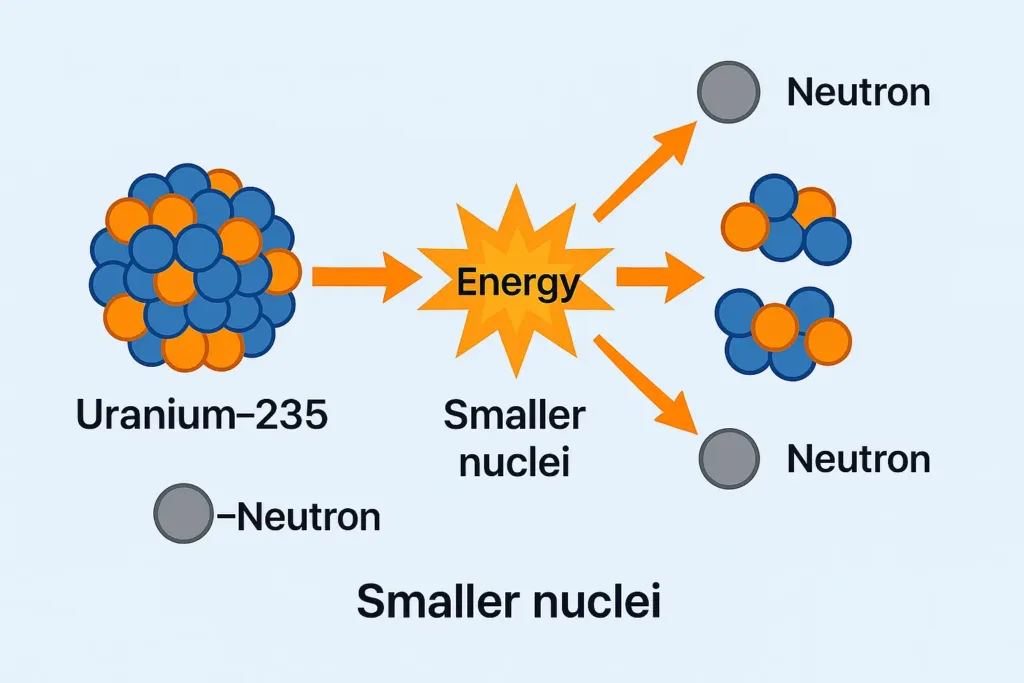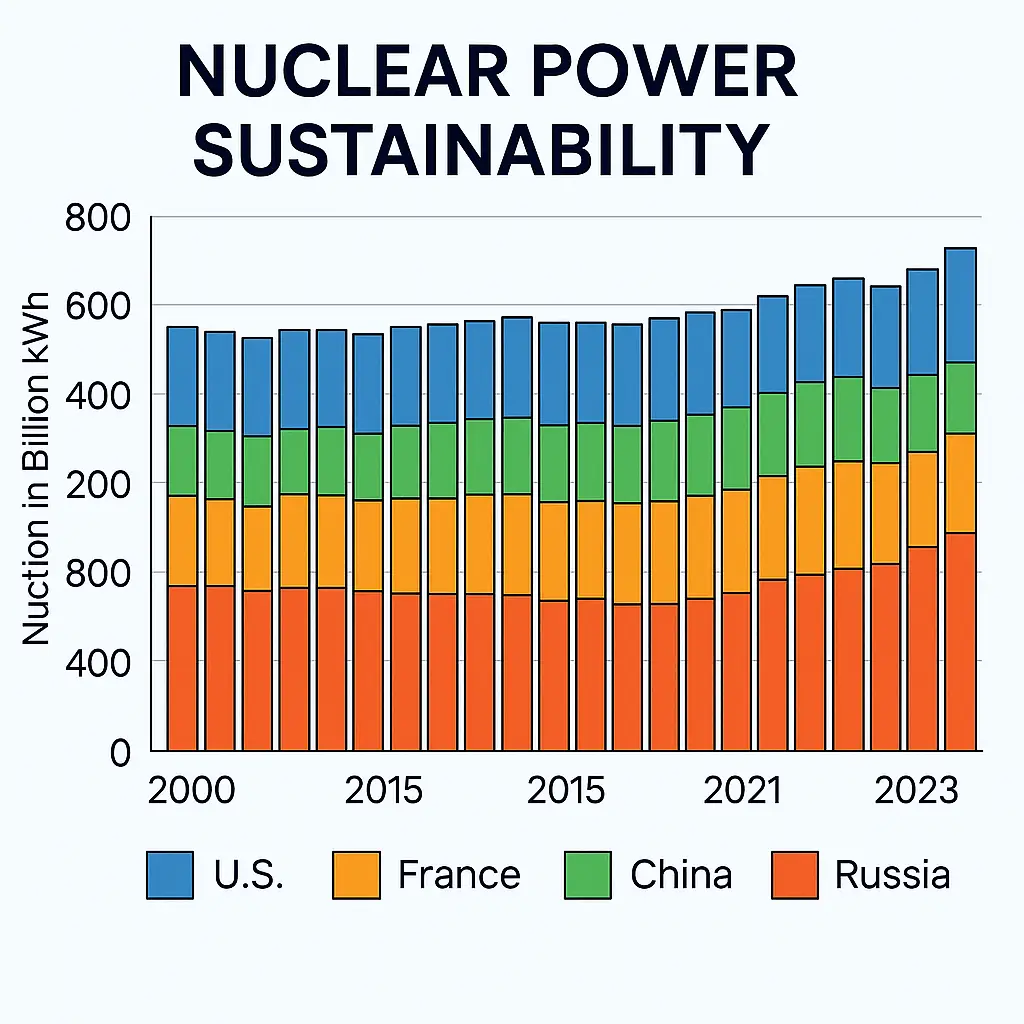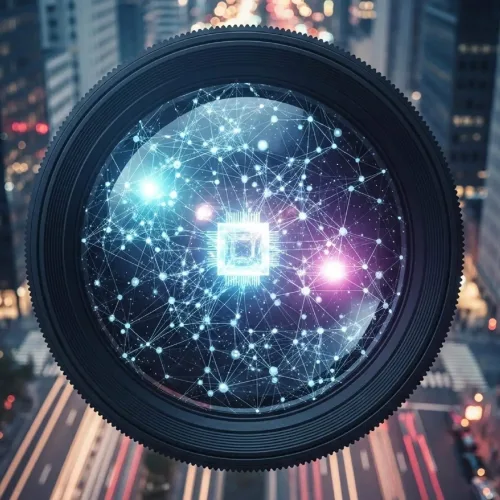How we can generate electricity without polluting the environment? It’s a big question, especially as everyone is on the lookout for energy sources that would not harm the world. Nuclear power plants often come up in these discussions. They are clean, powerful, and much safer than some people might think. These plants generate about 10% of the world’s electricity, which is quite amazing.
In this post, we are going to dive into how these nuclear power plants actually work. We will explore what makes them safe. We will also discuss why they are important as we try to move toward a future with low carbon emissions. So, let’s get into it!
What Is Nuclear Energy?
Nuclear energy is basically the power that is released when you split or combine the nucleus of an atom. In nuclear power plants, they use this energy through a process called nuclear fission. This is where uranium atoms, the naturally radioactive metal, are split apart to create heat. The generated heat is then used to produce electricity. So, in a way, nuclear energy serves as a low-carbon choice compared to fossil fuels, which is very important for our environment.
The Basics of Nuclear Fission
Nuclear fission happens when a neutron strikes the nucleus of a uranium-235 atom. The atom then splits into two smaller nuclei. In this process, a huge amount of energy is released in the form of heat, plus it sends out more neutrons that can start even more fission reactions. Consider it like a game of billiards: one ball hits another, and bam! It splits the action, sending more balls flying everywhere.
This whole chain reaction is involved in nuclear power energy. It’s not just a free-for-all, though; it’s carefully controlled to make sure we get a steady flow of heat without it spiraling out of control. And if you take a look at the diagram below, you can really see how powerful and precise this fission process can be!

Types of Nuclear Reactors
There are many types of nuclear reactors, but the most common are:
- Pressurized Water Reactors (PWR): So, in a PWR, the water inside the reactor core gets really hot, but it is kept under high pressure to stop it from boiling. This superheated water then transfers its heat to another loop of water in something called a steam generator. That’s where the magic happens! It turns into steam, which then drives a turbine. PWRs are widely used due to their efficiency and safety features. Check out our detailed post on pressurized water reactors.
- Boiling Water Reactors (BWR): In these reactors, the water actually boils in the reactor core. This process creates steam that goes straight to the turbine. While this design is more straightforward, it does mean that BWRs need some strong safety systems to keep an eye on that steam.
The table below compares these reactor types, highlighting their differences and applications.
| Feature | Pressurized Water Reactor (PWR) | Boiling Water Reactor (BWR) |
|---|---|---|
| Coolant | Water (primary and secondary loops) | Water (primary and secondary loops) |
| Steam Generation | In steam generator | Directly in reactor core |
| Efficiency | Higher due to secondary loop | Slightly lower |
| Commonly Use In | U.S., France, Russia | U.S., Japan, Sweden |
Step-by-Step Guide: How a Nuclear Power Plant Works
The nuclear power plant process transforms the heat from fission into electricity through a series of carefully engineered steps. Here’s how it works:
- Fuel Rods: The process starts with fuel rods—long, slender tubes filled with uranium-235 pellets. These rods are loaded into the reactor core, where fission occurs.
- Reactor Core: In the core, fission generates heat. Control rods, made of neutron-absorbing materials like boron, regulate the reaction by slowing or stopping it as needed.
- Coolant System: A coolant, typically water, absorbs the heat from the core. In PWRs, this water stays liquid under pressure; in BWRs, it boils into steam.
- Steam Generator: In PWRs, the hot coolant flows through a steam generator, heating a secondary water loop to produce steam. BWRs skip this step, as steam is generated directly in the core.
- Turbine and Generator: The steam spins a turbine connected to a generator, converting mechanical energy into electricity.
- Cooling Tower: After passing through the turbine, the steam is cooled in a condenser, often using water from a cooling tower, and recycled back into the setup.
This efficient cycle, illustrated in the diagram below, ensures continuous electricity production with minimal waste.

Is Nuclear Power Safe? Understanding Safety Protocols
Is nuclear power safe? A lot of people have concerns about it. But, nuclear power plants come with a whole array of safety features built right in to keep both people and the environment safe. They follow strict protocols, and the technology used is highly advanced. When everything is managed well, nuclear energy is actually considered one of the safest ways to generate power. So, while it’s totally normal to have worries, there is a lot of care taken in the design and operation of these facilities.
Regulatory Bodies and International Oversight
The International Atomic Energy Agency, plays a big role in setting the global standards for nuclear safety. They work alongside around 171 member countries to push for safe and peaceful uses of nuclear technology. Then you have the national regulators, like the U.S. Nuclear Regulatory Commission (NRC), which takes the reins when it comes to enforcing those standards. They have a hand in everything, from how plants are designed to when they are finally shut down.
These organizations are important in making sure nuclear power plants stick to some stringent safety rules. They are always on the job, conducting regular inspections and tweaking those standards as new research comes in or as lessons are learned from past incidents. It’s all about keeping things safe and secure.
Emergency Preparedness and Response
Modern nuclear power plants are outfitted with:
- Containment Domes to prevent radiation leaks
- Control Rods to halt the chain reaction instantly
- Backup Power Generators to keep cooling during outages
- Evacuation Protocols that are regularly rehearsed
Every system has its risks. But it’s pretty clear that these strong features show just how much safety has improved over time.
Who is Using Nuclear Energy Around the World?
Nuclear power plants contribute around 10% of the world’s electricity, so they are definitely important in the battle against climate change. The United States leads the pack as the biggest producer, and then we have China and France right behind. In fact, in France, nuclear energy makes up about 70% of their electricity supply.
Now, looking ahead, there are about 440 nuclear reactors running across 31 countries, and get this—over 60 more are being built, especially in Asia. It’s interesting to see this kind of growth. It really shows that more people are starting to recognize how nuclear power can play a significant role in sustainable energy.

Future Prospects and Sustainability
We have got some exciting next-gen technology on the horizon, like Small Modular Reactors, along with some fairly advanced fuel cycles. The idea here is to cut down on waste, lower costs, and speed up the building process. Sounds promising.
Nuclear energy, believe it or not, could actually be a game changer in our quest to hit those net-zero carbon targets by 2050. It’s like a crucial piece of the jumble. The way ahead seems to blend fresh innovation with tried-and-true energy approaches. It really does hold some solid promise for making nuclear power more sustainable.
Common Nuclear Power Myths—Busted
Let’s separate facts from fiction:
- Myth: Nuclear plants can explode like bombs.
Truth: Nuclear fuel is low-enriched and incapable of explosive detonation. - Myth: Nuclear energy is dirtier than coal due to waste.
Truth: Nuclear waste is tiny in volume and carefully stored—unlike air pollutants. - Myth: Radiation exposure is inevitable.
Truth: Living near a nuclear plant gives you less radiation than eating a banana.
Advanced nuclear reactor safety designs and transparency combat these fears.
Conclusion
Nuclear power plants tap into the amazing energy of atoms to offer us with clean, dependable electricity. They are very important for a sustainable future. Due to strong safety protocols, international monitoring, and constant advancements in technology, nuclear energy is stepping up to tackle climate issues and clear up a lot of misconceptions about its dangers.
We’d love to hear what you think! Drop your thoughts in the comments. And, if you are curious about more science stuff, keep visiting Learning Breeze. There’s plenty to discover!
Often Asked Questions
Yes. Modern nuclear power plants are designed with multiple safety systems, including containment domes and radiation shielding. Regulatory bodies like the U.S. Nuclear Regulatory Commission (NRC) and IAEA enforce strict safety standards to protect both workers and the public.
Technically, no. Nuclear energy relies on uranium, a finite resource. However, it is considered sustainable because uranium supplies can last for decades, and advanced reactor designs aim to use fuel more efficiently
No. The fuel used in nuclear reactors is not enriched enough to cause a nuclear explosion. Nuclear power plant safety systems are designed to prevent such scenarios entirely.
Very little. In fact, living near a nuclear plant exposes you to less radiation annually than a single cross-country flight or eating a few bananas. Most radiation we face comes from natural sources like the sun and soil.




